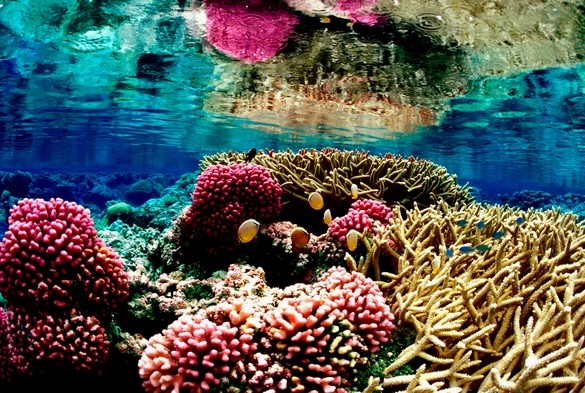New research reveals how a common ingredient found in sunscreen is apparently toxic to coral that is now contributing to major threats that coral reefs experience on a global scale.
This chemical compound called oxybenzone works by filtering UV rays and are currently found in 3,500 brands of sunscreen around the world, which can be especially fatal to young coral and cause damaging effects to adult corals when exposed to high concentrations, according to this new study.
The team behind this new study is led by Craig Downs of the Haereticus Environmental Laboratory in Virginia which is a non profit scientific organization. His international team is also made up by researchers from University of Central Florida, reveals how the highest concentrations of oxybenzone are found in tourist heavy places such as Hawaii and the Caribbean regions.
Downs also offered this as an explanation as to why scientists no longer observe baby corals in numerous established resort areas with coral reef populations.
This chemical compound transforms coral DNA and forces coral to become more vulnerable to fatal bleaching, acting as an endocrine disruptor. This now causes baby coral to enclose itself in its own skeletal structure and die, according to new findings.
The study estimates that there are between 6,000 to 14,000 tons of sunscreen lotion getting dissolved into the oceans and absorbed by coral reefs every year, much of it contains the deadly compound, oxybenzone.
The damaging effects on the corals are seen even from really low concentrations of oxybenzone, equalling to 62 parts for every trillion or a drop of water in six and half swimming pools that are Olymipic sized, researchers say.
However, in Hawaii and the Caribbean, oxybenzone concentrations are 12 times higher than this, according to sea water analysis.
The Environmental Working Group already raised prior concerns about the toxic effects of this chemical also in humans, claiming that this can be absorbed upon skin contact and cause significant hormonal and cellular changes in the body.
However, the American Academy of Dermatology says that there is no data analysis to prove that oxybenzone is hazardous to health and even notes that oxybenzone is an essential ingredient in sunscreen to protect skin from harmful UVA and UVB rays.
This study is published in the Archives of Environmental Contamination and Toxicology.



























